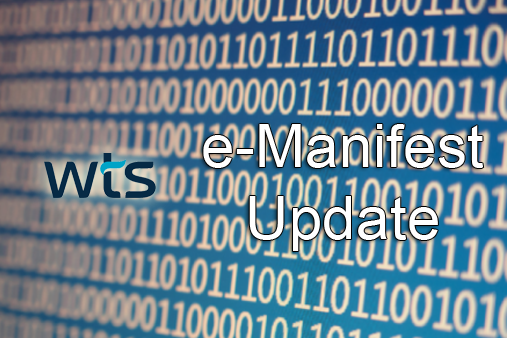In an effort to spur more widespread use of the electronic Hazardous Waste manifest system (e-Manifest), USEPA conducted Virtual Public Meetings on the topic of “Increasing Adoption of Electronic Manifests” on October 27th and November 3rd. WTS was in attendance and participated in both sessions. USEPA reported that “Electronic manifests (fully electronic and hybrid manifests) represent less than one percent of the approximately two million manifests the Agency receives annually” and that “This pace of electronic manifest adoption falls far short of Agency expectations.” This news should come as no surprise to those of us that have kept a keen eye on the development or lack thereof, which we have reported on regularly since the inception of the e-Manifest program in 2018.
The agency, via these public meetings, wished to solicit feedback and ideas on ways to increase adoption and to attempt to further increase knowledge of the “current electronic workflow.” During the meetings, the agency seemed to focus on two areas that they believe have stagnated widespread adoption of the e-Manifest system – Methodology of required signatures and compatibility with existing platforms, i.e. in the TSDF community. WTS also believes that these are significant obstacles, but we also remain less then optimistic of potential users acceptance due to factors we will outline below.
On the question of signatures, as we all know, the current system requires that all parties, i.e. Generator, Transporters, and the Receiving facility be registered in EPAs RCRA-info e-Manifest portal both as companies and the individuals that will be signing. With no real incentive (regulatory requirement/driver) to register, participation has been lacking and particularly in the transportation community. The agency is considering three new “conceptual workflows” as options to address this issue:
- User Uploads Signatures at the End
In this scenario, an electronic manifest would be created and submitted to the Receiving Facility at the inception of the transaction, a signed paper copy accompanies the load and only the Receiving Facility would need to be registered to submit the final executed manifest to the e-Manifest portal. - Third Party System Uploads Signatures Throughout; Third Party Advances Manifest
Here, once again an electronic manifest is created but the signatures don’t occur in the official e-manifest system and may occur and be captured in a program like DocuSign or something similar. Official registration would again only be required by the Receiving facility so they can submit the final executed manifest to the e-Manifest portal. A paper copy of the manifest with appropriate signatures would again need to accompany the load throughout the transaction to meet USDOT Hazardous Materials requirements. - User Uploads Signatures Throughout; e-Manifest System Advances Manifest
The major proposed change under this concept is that registration would be required for individual Site Managers for each party and other individuals in the company could use the Site Manager’s registration credentials to electronically sign the manifest. Not every individual would have to register and sign in “real time” for instance. Instead of an individual driver having to access and sign the manifest, someone else at the transportation company, i.e. supervisor or dispatcher, could electronically sign on the driver’s behalf. Once again, no relief is offered from USDOT requirements and the paper copy would need to accompany the load.
All of these concepts (Remember – they are just concepts and none are in practice or allowed to occur at this time) are interesting and may lead to increased participation but they all fail to address what we view as the main obstacle, overall access, i.e. generators and transporters registered and having actual electronic online access via tablet, computer, smart phone, etc. at the time of the shipment along with the TSDF community (Receiving facilities) utilizing the e-Manifest portal in lieu of or along with their own proprietary systems, which they use to generate manifests and track receipts and distribution of the same. USEPA also spent a great deal of time during the public meetings on the technical side of IT systems communicating and collaborating, which may address this issue. It still remains to be seen how accepting the TSDF community will actually be.
Rest assured that WTS will continue to monitor this situation and update our stakeholders accordingly. For the time being, we do not foresee any changes or interruptions with the way that your Hazardous Waste Manifest process currently operates. Should you have any questions on this matter, please do not hesitate to reach out to your WTS Technical Representative.

